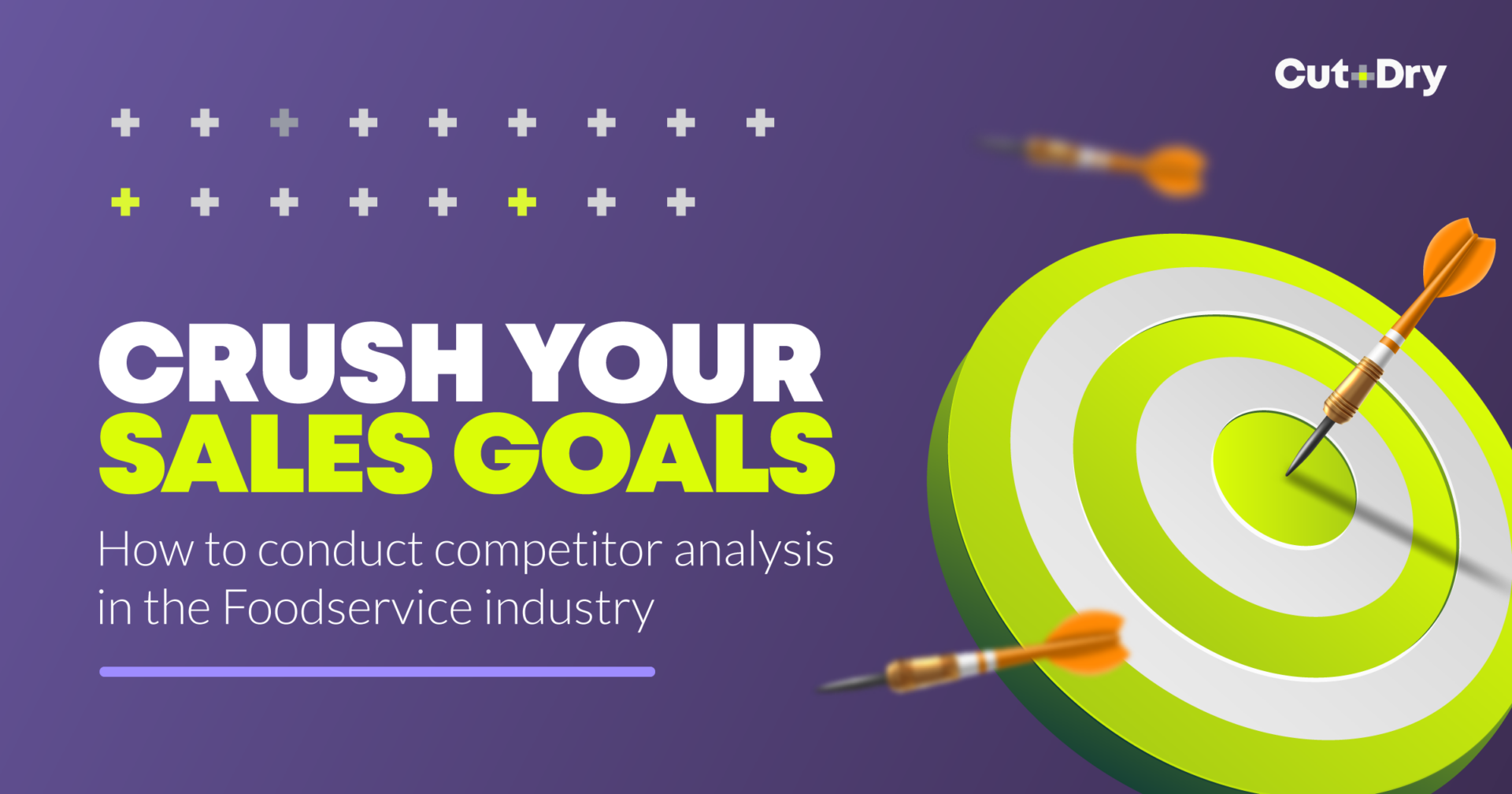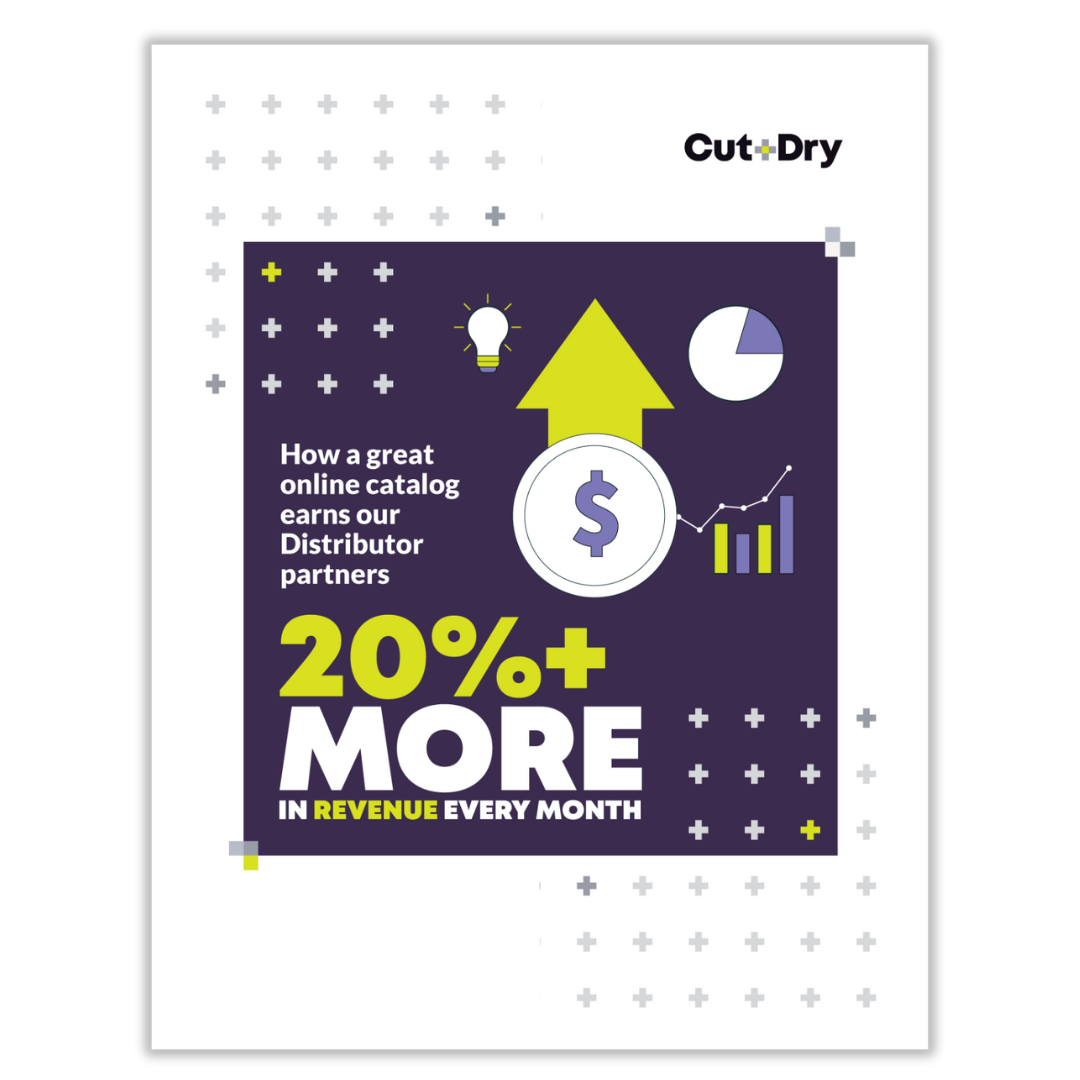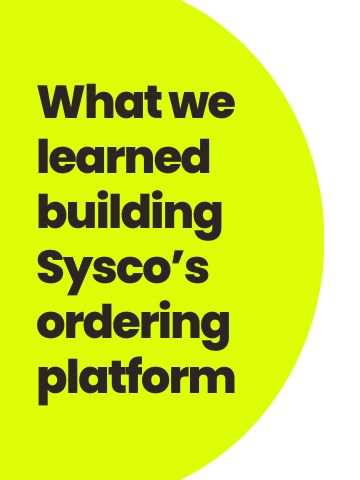
Whether you’re a veteran in sales or a newbie, we all know staying ahead of the competition is crucial in the Foodservice industry. You must have the best product at the best price at the right time, or you risk losing a valuable customer. As a Sales Representative, seeking new opportunities to drive growth is part of how you achieve success. By mastering competitor analysis, you can gain valuable insights into market trends, customer preferences, and competitor strategies, refine your sales strategy and grab new opportunities.
Why is competitor analysis important?
Competitor analysis is more than just a business buzzword. It is a fundamental part of a sales strategy. You can gain valuable insights that inform your approach by analyzing competitors' products, pricing, and marketing strategies. Understanding the competitive landscape allows you to identify gaps in the market and anticipate shifts in customer preferences. You can proactively respond to competitor actions as well as customer questions about different products available in the market and help shape the conversations with restaurant decision-makers.
How to Conduct a Competitor Analysis?
Step 1: Identify your key competitors
The first step is pretty simple: you have to identify your direct and indirect competitors. You can do this in a variety of ways, including online research, industry reports, local and regional business directories, and attendance at trade shows and conferences. These will give you valuable information to identify your competitors and understand their market position. If you have a good relationship with your customers, you can also ask them about similar products or services that they may have encountered.
| Example: Independent Foods Co is a broadliner based in California. They created a list of their key competitors, considering companies in the same region and/or product mix.
They identified their key competitors as
|
Step 2: Analyze competitor products and offerings
Once key competitors have been identified, the next step is to analyze their products and offerings in detail. This involves examining product features, quality, and pricing and assessing the overall value proposition presented to customers. You can gather information by visiting competitor websites, reviewing product catalogs, and monitoring social media channels for customer feedback and reviews. Additionally, tools such as competitive intelligence software can provide valuable insights into competitor pricing strategies and promotional activities, helping you to understand the competitive landscape better and identify areas for differentiation. You can also compare the products you offer for similarities and differences.
Step 3: Assessing competitor strengths and weaknesses
A key aspect of competitor analysis is assessing the strengths and weaknesses of key competitors. We all know about SWOT analysis (Strengths, Weaknesses, Opportunities, Threats), which is a great tool for you. A SWOT analysis systematically evaluates your competitors' strengths and weaknesses relative to one's own company. By identifying areas where competitors excel and areas where they fall short, sales representatives can pinpoint opportunities to differentiate their offerings and capitalize on competitive weaknesses to gain a strategic advantage.
| Example: Independent Foods Co. conducted a SWOT for United Foods Inc: | |
Strengths
|
Weaknesses
|
Opportunities
|
Threats
|
Step 4: Understanding competitor sales and marketing strategies
In addition to analyzing products and offerings, it's important for you to understand the sales and marketing strategies employed by key competitors. This involves analyzing competitors' advertising campaigns, promotional activities, and sales approaches to gain insights into their messaging, target audience, and value proposition. By understanding how competitors position themselves in the market and attract customers, you can refine your own sales and marketing strategies to effectively differentiate their offerings and appeal to target customers.
| Example: Independent Foods Co analyzed the sales and marketing strategies used by United Foods Co |
United Foods Co
|
Step 5: Customer feedback and insights
Customer feedback is a valuable source of insights for sales representatives looking to gain a deeper understanding of competitors. By gathering feedback from existing and potential customers about competitors' products, services, and overall experience, sales reps can gain valuable insights into customer preferences, pain points, and perceptions of competitors' offerings. This can be done through surveys, interviews, and social listening, allowing you to identify areas where competitors excel and areas where they fall short from the customer's perspective.
| Example: Independent Foods Co spoke to a few of its customers who own dessert bars, cafes, and other establishments with dessert menu items to find out what they think of United Foods Co. |
|
Step 6: Leveraging these insights into sales success
The proof is in the pudding, as they say. So, a competitor analysis is only as good as the actionable insights you can gain out of it. Now that you are armed with a deep understanding of your competitors and customer preferences, you can leverage these competitive insights to drive sales success for your business.
This involves incorporating insights gained from competitor analysis into sales strategies and tactics, such as tailoring messaging to address customer pain points, highlighting unique selling propositions, and positioning offerings to differentiate them from competitors. By leveraging competitive insights, sales reps can effectively communicate value to customers, build stronger relationships, and win more business in a competitive market.
Example: Independent Foods Co conducted the competitor analysis for all its key competitors. Based on this analysis, they decided to revamp their sales and marketing strategies to get more customers and increase sales. They decided on the following:
|
Final step: Keep reiterating, it's not a one-time activity
It is important to remember that a competitor analysis is not a one-time job. You have to keep monitoring and reiterating to stay ahead of the game. Sales representatives should regularly monitor competitors' products, pricing, and marketing strategies to stay informed about changes in the competitive landscape.
This involves tracking competitor activity, setting up alerts, and conducting regular competitive landscape reviews to identify emerging trends, opportunities, and threats. By staying proactive and adaptable, you can continuously refine your approach and maintain a competitive edge in the market.
Conclusion
Competitor analysis is a fundamental aspect of sales strategy in the food and restaurant supply industry, offering valuable insights that can inform sales strategies, drive differentiation, and ultimately lead to sales success. By mastering competitor analysis and leveraging competitive insights, sales representatives can gain a deeper understanding of the competitive landscape, identify growth opportunities, and position themselves for success in a dynamic and competitive market.










